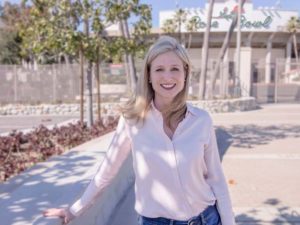
1. Spending by the oil and gas industry on local races casts doubt on whether voters can trust their elected leaders to protect them from the impacts of pollution and climate change. Will you pledge to refuse any donations from the fossil fuel industry?
Absolutely.
2. According to the most recent data from the California Office of Traffic Safety, in 2017 Pasadena had the second-highest number of senior pedestrians killed or injured in traffic collisions, and the fourth-highest number of people on bikes killed or injured, among 58 similarly sized cities across California. What can the City do to make our streets safer for everyone, especially older adults and children? Do you support a Vision Zero policy for Pasadena?
I fully support Vision Zero. Currently, Pasadena is very car-centric. We need to view our roadways from the perspective of all our users. We need to create systems of mobility that support walking, biking, mass transit and cars. We need more walkable routes with lights and cross walks conducive to safe walking. As we create vibrant neighborhoods, that include senior housing, we need to understand and build out great walking spaces. We need bike routes that connect throughout the city on appropriate roadways.
3. Pasadena streets around schools are frequently unsafe. This discourages parents from allowing their children to walk or bike to school, and makes the health benefits of active transportation inaccessible for many Pasadena youth. If elected, how would you prioritize student safety and mobility around schools?
We need to mobilize schools communities around walking and biking to school. This includes volunteer adults monitoring the way; PTA, administrative, and teacher support of the initiative; and fun incentives for families that bike and walk. We need to support this work with periodic police presence and enforcement and general community education.
4. Pasadena Transit service is currently limited in many Pasadena neighborhoods, with service stopping at 7pm and not even provided to some neighborhoods on Sundays. In addition, many bus stops in Pasadena lack basic amenities like shade and seating. With so many older adults and other residents who cannot drive a vehicle, how can the City improve the comfort and convenience of its local bus service?
City leaders need to recognize the number of older people that live in Pasadena and develop systems to support senior quality of life. This includes shade and seating at bus stops, bus routes that go to meaningful places, and service that is convenient. Overall, Pasadena needs to understand the populations that would be incentivized to use the bus (seniors, young people, environmentally conscious) and build out systems and services that match these uses.
5. According to Pasadena’s Climate Action Plan, transportation is the number one source of greenhouse gas (GHG) emissions in the City of Pasadena, responsible for an estimated 52% of emissions. Gas-powered mobility is also the largest source of greenhouse gases in California, with GHGs increasing in recent years as more Californians purchase larger and less fuel-efficient SUVs and trucks (almost 60% of new car sales in California were SUVs in 2018), and drive more miles. Despite the growing popularity of electric vehicles statewide, these developments are now threatening to derail the state’s 2030 climate goals. What can the City do to support greater use of sustainable transportation and reduce transportation-related greenhouse gas emissions?
First, we need to move people to electric cars, build out the infrastructure to support increased use of electric cars, and make ownership of electric cars more feasible for lower income residents. Second, the City needs a plan to move all city vehicles to electric vehicles in a reasonable time frame. Third, the City needs to continue to build out its charging station network. Fourth, the City needs to work with its regional partners to meaningfully incentivize mass transit use. For the last decade we have said that if we build housing by transit, people will use it. But, this alone has not worked. We need to understand the real barriers to using mass transit by each population of potential users and address those barriers. We need to understand what types of incentives actually move the needle on moving people out of their cars and plan accordingly.
6. Pasadena lacks a safe network of separated lanes for bicycling, scooting, and other modes of micro-mobility. The few existing routes too often consist of narrow, unprotected striped lanes placed directly adjacent to fast-moving cars or shared use lanes marked with ‘sharrows’ in which people on bikes are put in direct conflict with drivers. The lack of safe space for these users often results in sidewalk riding, where conflicts with pedestrians are more likely to take place. Do you support building out a robust and connected bike/roll network with protected lanes to enable residents of all ages and abilities to get around safely, and if so, how will you work to make this a reality?
I definitely support this in concept but it has to be implemented smartly and balanced with two other important goals—easing congestion and creating more, safe, walkable spaces and routes. This likely means using less traveled streets to create this network. We also need to address the safety and public blight concerns around scooters. And, we need to determine how many people would actually use biking as a micro-mobility measure. Metro tried bike-sharing in Pasadena and it did not work. We need to understand exactly why.
